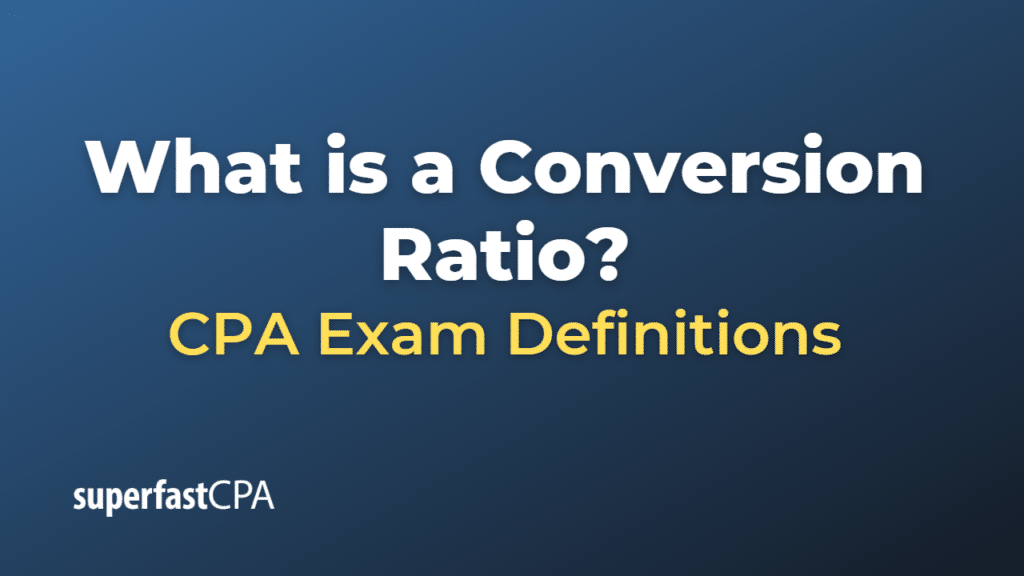Conversion Ratio
A conversion ratio is a financial metric that specifies the number of common shares an investor can obtain by converting a convertible security, such as a convertible bond or a convertible preferred stock. The conversion ratio is crucial for investors who hold convertible securities, as it determines the value they receive upon conversion and allows them to compare the potential return on their investment with other investment alternatives.
The conversion ratio is typically expressed as a fixed number of shares per convertible security. For example, a conversion ratio of 5:1 means that an investor can convert each convertible security into five common shares.
To calculate the conversion ratio, you can use the following formula:
Conversion Ratio = Par Value of Convertible Security / Conversion Price
Here, the par value is the face value of the convertible security (usually $1,000 for convertible bonds), and the conversion price is the predetermined price at which the security can be converted into common shares.
Investors monitor the conversion ratio and the market price of the common shares to determine if it is beneficial to convert their securities. If the market price of the common shares multiplied by the conversion ratio is higher than the current value of the convertible security, it may be advantageous for the investor to convert. However, investors must also consider other factors, such as dividend payments and interest rates, before deciding whether to convert their securities.
Example of Conversion Ratio
Let’s consider a hypothetical example involving a convertible bond to illustrate the concept of a conversion ratio:
Company ABC issues a convertible bond with a par value of $1,000 and a conversion price of $20 per share. To calculate the conversion ratio, we can use the following formula:
Conversion Ratio = Par Value of Convertible Security / Conversion Price
Conversion Ratio = $1,000 / $20
Conversion Ratio = 50
This means that for each convertible bond, the investor can convert it into 50 common shares of Company ABC.
Now let’s assume that the current market price of Company ABC’s common shares is $25. To determine if it’s beneficial for the investor to convert their bond, we can compare the value of the common shares upon conversion with the current value of the convertible bond:
Value of Common Shares Upon Conversion = Conversion Ratio × Market Price per Share
Value of Common Shares Upon Conversion = 50 × $25
Value of Common Shares Upon Conversion = $1,250
In this example, converting the bond into common shares would result in a total value of $1,250, which is higher than the bond’s par value of $1,000. This indicates that it may be advantageous for the investor to convert their bond into common shares.
However, the investor should also consider other factors, such as the bond’s interest payments, potential fluctuations in the stock price, and the opportunity cost of holding the bond, before deciding whether to convert the bond into common shares.














